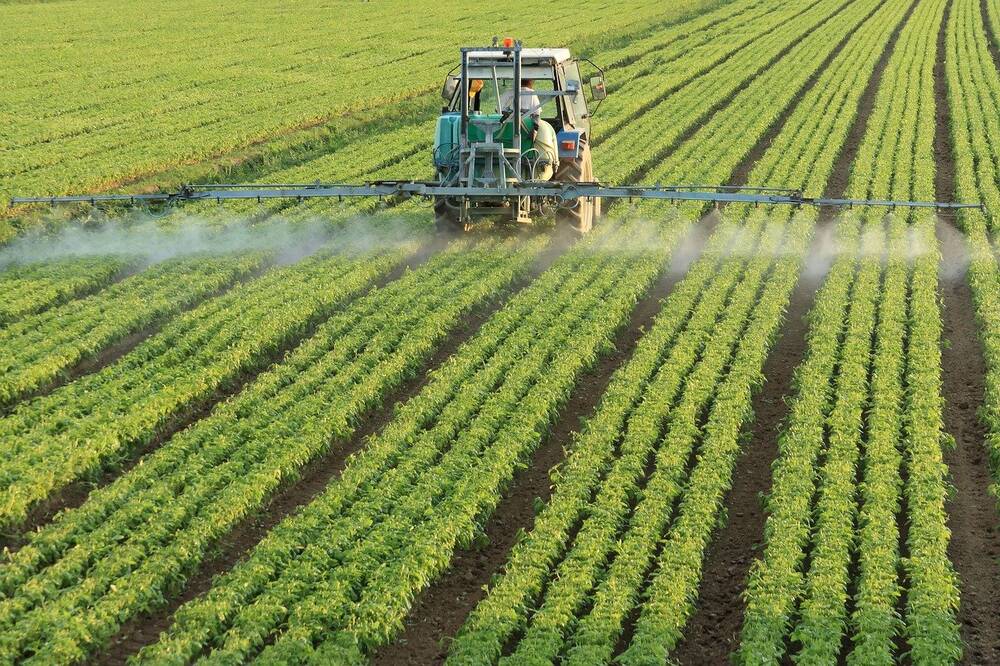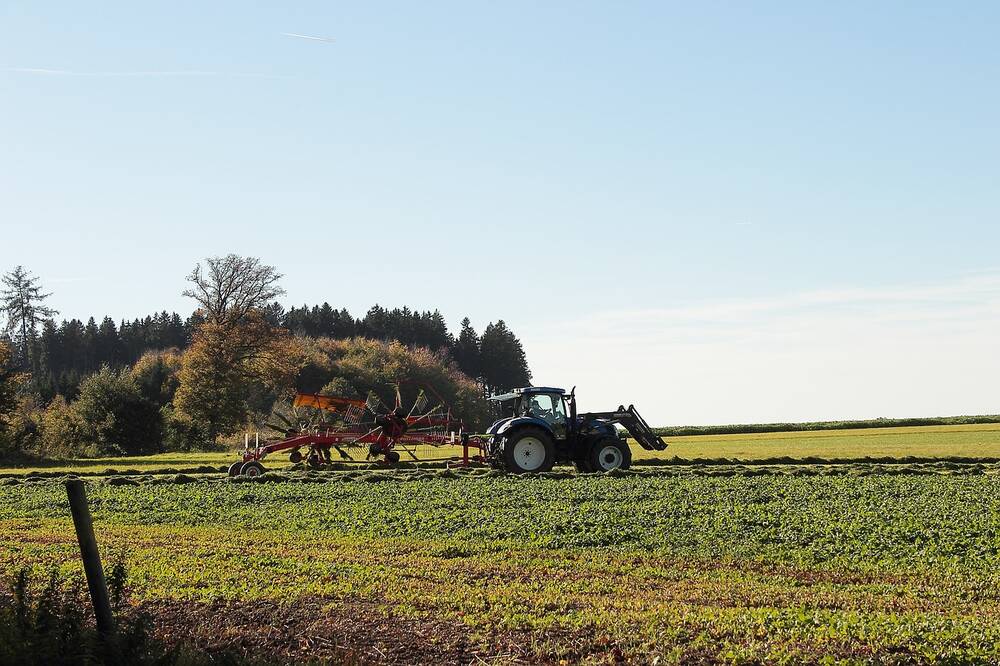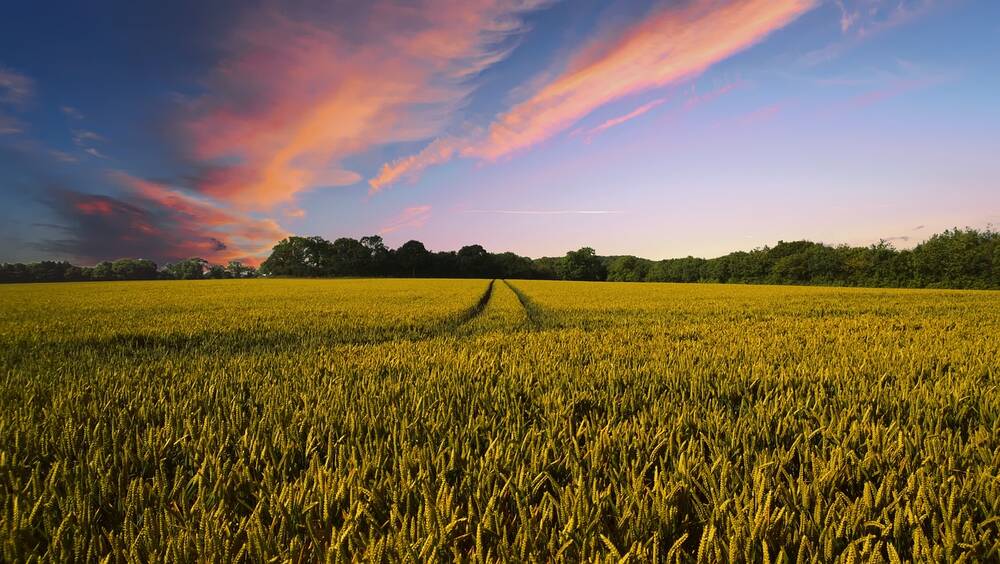Traditional farming may be effective at creating short-term, high-profit yields of ecologically-modified crops, however, it is drastically harmful to nature in the long term.
Soil quality degrades due to tilling and chemicals, waste can be offset in polluting ways, animal welfare is not a priority, and synthetic dependence leads to vulnerability.
Regenerative agriculture removes all these risks, instead involving a practice of self-sustaining, climate-friendly, nature-boosting farming that leaves the environment in a much-improved condition.
This article delves into the various methods and regenerative agriculture practices in stark contrast to traditional methods, and the stark difference in their lasting impacts on nature.
What Is Regenerative Agriculture?
Regenerative Agriculture, also referred to as regenerative farming, involves non-traditional methods of farming with a primary objective of regenerating and enhancing ecosystem health while still yielding crops. It plays an important role in large-scale environmental maintenance and restoration.
Where traditional farming may rely on chemical inputs and large-scale farming equipment aimed at maximising short-term yields, regenerative agriculture differs. Though farmers still sell crops and make a living, economic viability is balanced directly with enhancing the land rather than degrading it.
Regenerative agriculture fosters economic sustainability by using natural inputs like cover cropping, composting and no-till methods. Managed crop fields can traditionally involve monocultures with one crop grown repeatedly in rows. Regenerative agriculture, instead, sees the value of crop diversity, in turn creating more resilient and sustainable ecosystems.

The Principles of Regenerative Agriculture
The principles of regenerative agriculture are neither hard-defined nor strict instructions, but rather foundational guidelines. They embody the ethos of enhancing ecosystems through farming and enable farmers to adapt the principles to their specific ecological contexts.
The first principle is to minimise soil disturbance which is achieved primarily through removing the need for tilling: a tractor turning over and breaking up the soil with harsh blades and discs. This can loosen the soil for planting, allow for synthetic nutrient application, and help control weeds. However, it also disrupts the natural soil structure, increases the risk of erosion, and depletes organic matter.
Second is to maximise crop diversity and move away from all forms of exhaustive monoculture, instead cultivating thriving soils by growing diverse crops within a resilient, rich ecosystem. These are resilient to external harm and attract valuable pollinators.
A third principle is to maintain living roots year-round. Traditionally, fields are left bare between crop cycles to reduce labour and prepare for the next round of intensive planting—causing nutrient loss and soil erosion. Regenerative agriculturalists would instead plant cover crops (plants grown between the cycles) or perennial plants (that live for multiple years, keeping roots in soil year-round) to maintain soil fertility.
As Knepp Estate has brilliantly exemplified, it’s key to integrate animals. Cattle, sheep, chickens, pigs, and goats, for instance, all offer vast ecological benefits for the land. Free-roaming animals naturally fertilise through grazing; mimicking natural ecosystems and creating fertile soils for biodiversity.
Lastly, at all costs, promote biodiversity to allow ecosystems to restore to their natural state, with more productivity, enhanced ecosystem services, higher resilience, healthier soils and fewer pests. Biodiversity is promoted through agroforestry, cover cropping, polycultures and other methods covered later.
The Benefits of Regenerative Agriculture
Regenerative agriculture promotes awareness about the long-term environmental harm caused by traditional farming methods, such as soil degradation, biodiversity loss and water pollution. It not only revitalises arable land that has been destroyed but uplifts all kinds of habitats.
Regenerative practices create masses of biodiversity which can directly boost local ecosystems, strengthening ecosystem services, and reducing agricultural runoff. These can all reduce input costs for local farmers, encouraging local food production.
Land used for regenerative agriculture becomes a hub for flourishing nature, making it an effective tool for carbon sequestration. The goal here is not just to balance emissions, but often to sequester more carbon than is emitted. For instance, no-till and conservation tillage on U.S. cropland was found to sequester up to 52 million MT of carbon per year.
The model creates a self-sustaining, renewable farming method that relies on natural processes rather than costly, harmful chemicals. It not only fights climate change, lessening the risks of extreme weather and global warming, but also empowers farmers to enhance their food systems, ultimately promoting greater food security.
Potential Disadvantages
When you aren’t manipulating biology with chemicals, a disadvantage is that nature takes time. It could be a few years before significant improvements.
Traditional farming is made as efficient and simplified as possible, with intensive farm equipment following structured rotations. Regenerative agricultural practices can be labour-intensive, calling for more thoughtful processes, like planning and monitoring, rotating livestock, planting the cover crops and managing diverse crops.
Some initial costs are higher than others, like specialised no-till drills, compost spreaders or fences. Training and education of new techniques can also require significant funding. Processes can require ongoing investment, with ongoing labour costs, organic inputs and ecosystem maintenance.
Examples of Regenerative Agriculture

Cover Cropping
Cover cropping challenges soil erosion. Soil erosion occurs when tilling breaks up the soil, bare fields are exposed to the elements after harvest, rain and wind carry the topsoil away, and the soil’s nutrients and organic matter are lost. The less-productive land, then, becomes dependent on chemical fertilisers to produce crops.
Instead of leaving fields bare between crop cycles like traditional farming, cover cropping involves protecting the soil and maintaining its fertility by planting (typically) non-harvested crops. Popular choices are rye, with deep roots holding the soil in place, buckwheat, which covers ground quickly, and clover, which takes in nitrogen from the air and naturally preps the soil for its next cycle.
Cover crops outcompete weeds so you don’t need chemical herbicides, break cycles of pests and diseases so you don’t need pesticides, and make soil retain moisture and require less irrigation.
Crop Rotation
Crop rotation is when farmers regularly switch which crops are on specific fields.
In traditional farming, growing the same monoculture on one field each year hugely reduces biodiversity, leading to eroded soils, disease and pest risk, and potential dependencies on synthetic inputs.
In RA, crop rotation routinely restores the nutrients in the soil, such as nitrogen. It can improve soil health by creating a more stable soil structure. Deep-rooted plants make soils resilient to erosion.
The microbial activity is enhanced, with different root systems releasing their own organic compounds which improve the soil.
This further reduces compaction as crops are alternated at varying depths. In monocultures, the shallow roots fail to break up the soil, and heavy machinery can compress it down. This results in less access to water, hence less growth of roots.
Agroforestry
Agroforestry is where trees are integrated with crops, shrubs and other livestock all in one habitat.
The deep roots of trees effectively stabilise the soil and retain large amounts of water. They further promote high levels of biodiversity by offering rich habitats alongside sources of food and shelter, supporting a more diverse food chain. The shade they offer creates microclimates, lowering temperature extremes for crops and animals.
Trees capture more carbon than crops alone, meaning the farm is not just climate-friendly but potentially a strong global warming mitigator.
Trees also offer fruits, nuts and timber, powerfully diversifying farm income. After a careful planting period, pruning and protection, trees are quite self-sustaining and inexpensive to manage. They provide essential long-term ecosystem health, not only adding fruitful income but enhancing value through crop yield.
No-Till Farming
‘Tilling’ is the act of ploughing and heavily disrupting soils, such as with heavy machinery, in order to secure short-term yields. It aerates and loosens the soil, making it easier for seeds to germinate and take root, while also controlling weed populations. This makes it easy to dump fertiliser and organic matter, triggering widespread crop growth.
Though effective for crop-yielding, the soil quality becomes degraded and nutrients are lost. The soil’s ecosystems are disrupted, without microbes, fungi or worms, and soil is over-compacted.
Instead, no-till farming uses specialised equipment, such as a no-till drill, which cuts narrow slits into the soil and places the seeds at the right depth without disturbing the soil.
These methods build strong farms, with high soil water levels, vast biodiversity and long-term ecosystem resilience.
Managed Grazing

Grazing is when livestock (usually cows, goats, or sheep) in a pasture feed on the tops of plants without damaging the roots. This maintains a food system and source for wildlife, sustains soil fertility and ensures long-term productivity, as land can be reused continuously while remaining healthy.
Managed or rotational grazing involves strategically controlling where the animals graze. This includes keeping livestock in a paddock or section of a field, then moving them to a different section. This gives the plants time to recover instead of overworking the soil, ensuring it maintains its structure and fertility.
Beyond grazing, animal manure enriches the soil by adding nutrients and organic matter and boosting its fertility. Animals eat and discard seeds with continuous movement, contributing to the diverse spreading of plants and polycultures.
The selective grazing of animals means less-preferred species can grow and spread, promoting productive land use, species variety, and a diverse, self-sustaining ecosystem.
Silvopasture
A silvopasture is where land for grazing animals combines with agroforestry. “Silvo” comes from the Latin word for forest, and “pasture” refers to land used for grazing. This type of integrated land management combines crops, trees and grazing animals to create an improved wildlife habitat with priorities of animal welfare, nutrient cycling and forage quality (the nutritional value and palatability of the plants available to animals).
In silvopasture systems trees provide shade and shelter for animals, reducing heat stress and improving their overall comfort and health. These microclimates also act as habitats for various species, supporting broader ranges of biodiversity. Fallen organic matter from leaves feeds nutrients into soils, encouraging stronger plant growth and better crop yield.
Silvopasture aligns closely with the principles and ideals of regenerative agriculture, however has traditional roots in various historic agricultural practices—such as Mediterranean cultures integrating olive or fruit trees with grazing sheep or goats upon farmland.
Composting
Composting integrates easily into regenerative agriculture with its principles aligned with and utilising natural resources for their ecological and agricultural value. Farmers and individuals recycle organic matter, such as plant residues, animal manure, kitchen scraps, grass clippings or wood chips. They go into a compost bin, alternating high nitrogen with high carbon, promoting decomposition and leading to nutrient-rich compost.
The compost can then be accessed year-round as a free source of sustainable fertiliser. It enriches the soil with essential nutrients, leading to healthy, fertile soils that support strong, thriving crops. It boosts beneficial bacteria, fungi and other microorganisms that contribute to nutrient cycling, and further outcompete harmful pathogens that can cause disease, such as root rot or potato blight.
Water Management Practices
Relying on government water is not only unsustainable, but quite expensive, and further, might have contaminants like chlorine, lead or nitrates, harming plant and soil health over time. To counter this, there are various methods of water management systems utilised within regenerative agriculture.
Harvesting rainwater for irrigation purposes is quite effortless and plentiful, especially here in the UK. After the purchase of rain barrels, cisterns, or swales, no further costs tend to be required.
Drip irrigation involves delivering the water directly onto the plant roots, efficiently reducing the amount of water exposed to air and wasted through evaporation.
In hilly terrains, contour farming is when the crop rows follow the natural terrain of the landscape, giving the water more time to seep into the soil rather than quickly running off.
Polyculture Planting
Polycultures challenge monocultures. They involve growing multiple varieties of crops together, mimicking a natural environment and creating biodiverse ecosystems with complex structures and services, resilient to external challenges.
Polycultures are much more attractive to pollinators, leading to increased crop yield, reduced pest populations, and enhanced soil health able to support healthier, stronger wildlife.
Certain crops go together better than others: basil can enhance tomato’s flavour while repelling pests, carrots and onions root structures vary for efficient use of space, and further sweetcorn, runner beans and courgette support each other through nutrient sharing as well as physical support.
Integration of Livestock
Traditional farming, in some cases, uses concentrated grains and feed to promote rapid weight gain and achieve higher yields in less time, which can lead to imbalances of nutrients. Sometimes waste is used as fertiliser, and sometimes it’s deemed a liability and disposed of, which can contribute largely to pollution. Agricultural land can be intensively grazed, worsening soil conditions and wildlife quality.
In regenerative agriculture, livestock are rotationally grazed to ensure plants have grow-back time. Animals’ diets consist of flourishing, diverse flora, and animal waste is always resourced to enhance soil fertility and improve biodiversity.
A striking difference between the models is the treatment of the livestock. Traditional agriculture values production efficiency before animal welfare, whereas regenerative agriculture recreates natural environments and living conditions, providing animal well-being and encouraging happy, healthy animals.
Permaculture Design
Permaculture—combining “permanent” with “agriculture”—is a design of land use that mimics natural processes by integrating plants, people and animals into systems of self-sustainable ecosystems. Permanent agriculture, instead of short-term, high-profit yields.
This is commonly seen in community gardens, homesteads, schools, and even in ‘eco-villages’—such as Scotland’s Findhorn Foundation.
Permaculture involves many closed-loop systems. These are zero-waste cycles that utilise outputs, like composting, greywater recycling, or fallen plant material used for ‘mulch’, enriching soils and suppressing weeds.
They prioritise biodiversity, water conservation and soil health, utilising the planet’s resources in line with caring for the earth, and people and fairly sharing resources.
Organic Farming Practices
If something is organic, it is related to or derived from living matter. Organic farming practices, then, are ones that cleverly utilise natural resources and natural inputs instead of synthetic chemicals.
The majority of regenerative agriculture methods align with these principles, such as cover cropping, composting, and agroforestry. Animals aren’t fed chemically-altered, size-maximising feed, and soils are enriched with compost, animal waste and crop litter, instead of fertilisers built from ammonia and carbon dioxide.
Beyond enriched biodiversity, there is a growing market demand for organic-labelled products, sought after not only for their purity and natural state but for their inherently sustainable connotations. Consumers increasingly look for products with ethical practices throughout the entire supply chain.
There are various certifications that farms must acquire to market organically, such as the Soil Association Certification, where the farm’s practices must be heavily inspected.
Biochar
Biochar combines “biological” and “charcoal”. This living charcoal is an organic, sustainable source that offers many benefits to soil health and is widely used in regenerative agriculture.
It dates back over 2,500 years, with recorded uses by indigenous people in the Amazon Basin of South America for healthy soil purposes.
It can be made from materials like wood chips, straw, leaves, corn stover, as well as manure from poultry, pigs and cows. These are put through a process called pyrolysis where the oxygen is removed at a high temperature, triggering decomposition and resulting in biochar. The carbon is trapped inside in a stable form, effectively sequestering it for an extended period, and preventing it from adding to CO₂ emissions.
Biochar is incorporated into the soil before planting or during the soil’s preparation, ensuring soils will be fertile, healthy and able to retain high levels of nutrients to support maximum plant health.
Ecological Aquaculture
Aquaculture is the breeding, raising and harvesting of aquatic organisms—all organisms that live in water—in a controlled environment for a specific purpose.
Ecological aquaculture is aquaculture practices that operate within a framework of sustainability. Regenerative agricultural farms that incorporate fish mainly adopt these methods in their approach.
An example is high-density fish farming in traditional aquaculture which can promote disease as well as excess waste. Ecological aquaculture, in comparison, involves low-density fish farming allowing for natural behaviours and improvements in animal well-being.
Systems combine plants and fish with other aquatic organisms, creating a varied, balanced ecosystem. Synthetic fish feed in traditional models is replaced with algae, insects and plant-based feeds instead of preservatives or additives. It maintains optimal water quality, utilises sustainable feed sources, and minimises any adverse effects on the surrounding ecosystems.
Holistic Management
Holistic management is an approach to land and livestock management that balances the social and ecological factors alongside economic considerations. It’s a decision-making framework that tends to guide the decisions made within regenerative agriculture.
The framework was developed in the 1960s by ecologist Allan Savory during his conservation and land management work in Zimbabwe. It has been adapted to various contexts within RA, and largely addresses contemporary problems in climate change, agriculture and land degradation.
In this framework, farmers repeatedly adapt their practices based on feedback from nature. They watch how livestock, crops, and soil intersect with each other and their natural environment.
This continuous monitoring allows for easy identification of stressors, and subsequent revisions in methods to optimise processes and achieve thriving plant and animal communities.
Perennial Crops
‘Annual’ crops live 1 year and ‘biennial’ crops live 2 years. Crops that live over 2 years are classed ‘perennial’—from thousand-year-old oak trees to tiny flowers with a lifespan of just three years.
Perennial crops are commonly used in regenerative agriculture. Their roots in the soil operate as anchors, maintaining the soil’s structure, resilience and nutrient access. Some perennial crops are planted for economic crop value, like fruit bushes, asparagus or rhubarb, and others to enhance and anchor the soil, like clover and comfrey.
Not only do they require less maintenance once established, but they also produce multiple yields over the years, leading to a sustainable model of generating income while boosting the land’s ecology and fostering a biodiverse, fruitful environment.
More Information
https://www.findhorn.org/
https://biochar-us.org/biochar-then-now
https://ag.purdue.edu/commercialag/home/resource/2021/06/opportunities-and-challenges-associated-with-carbon-farming-for-u-s-row-crop-producers/
https://www.wildlifetrusts.org/blog/vicki-hird/what-regenerative-farming
https://groundswellag.com/principles-of-regenerative-agriculture/
https://regenerationinternational.org/why-regenerative-agriculture/
https://www.nrdc.org/stories/regenerative-agriculture-101
https://regenerativefoodandfarming.co.uk/
https://www.noble.org/regenerative-agriculture/
https://sustainablefoodtrust.org/news-views/the-many-meanings-of-regenerative-agriculture/
https://www.earthday.org/campaign/regenerative-agriculture/

